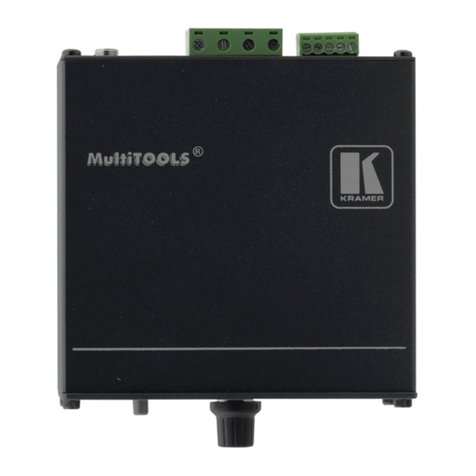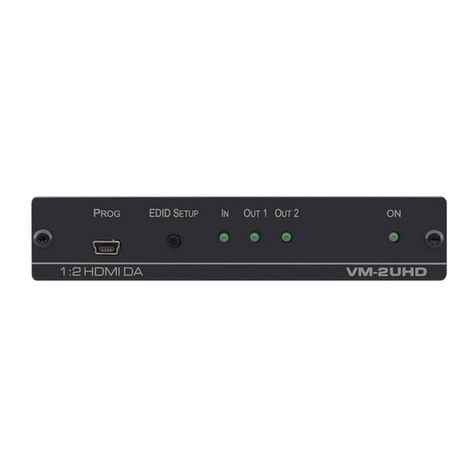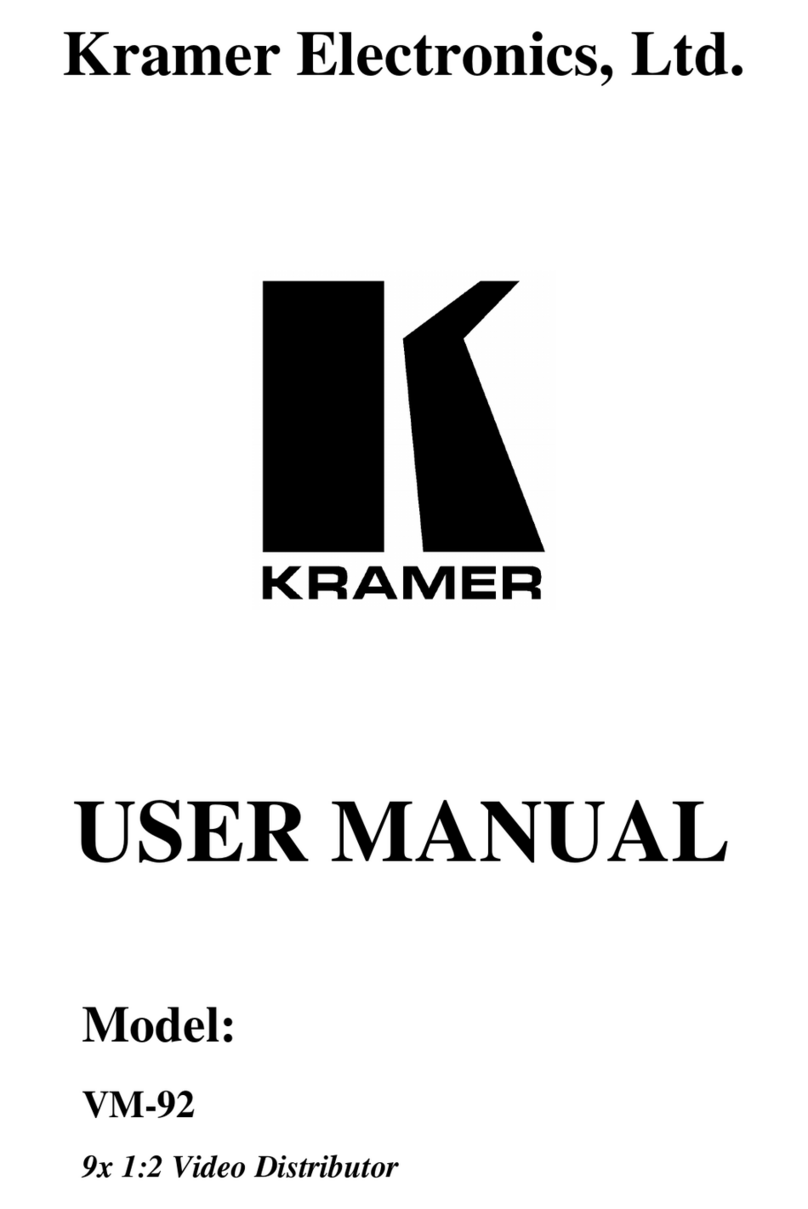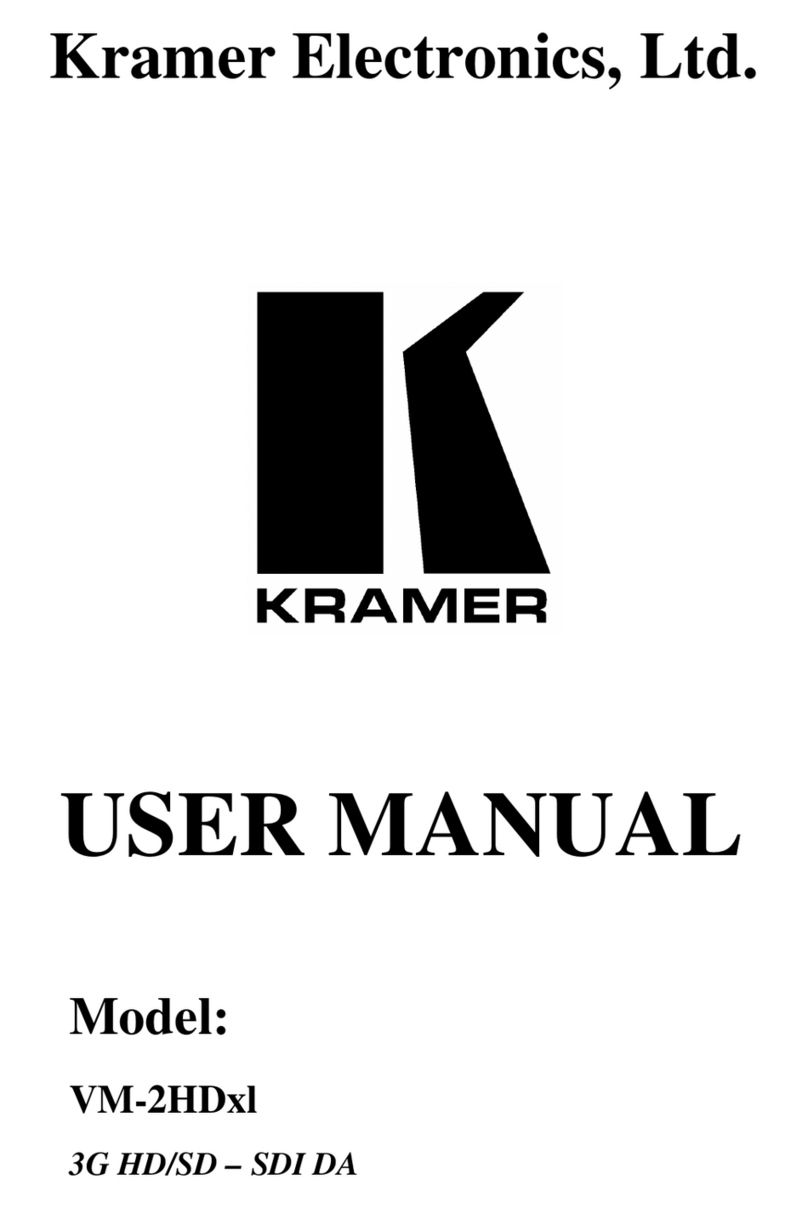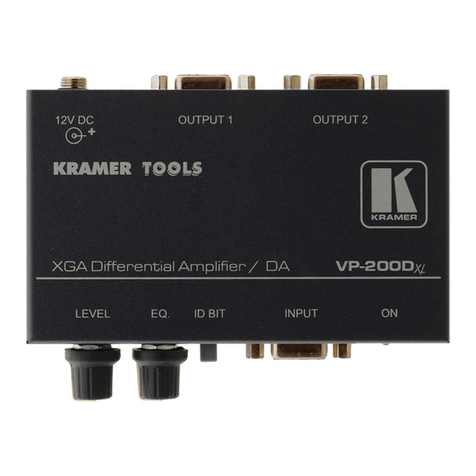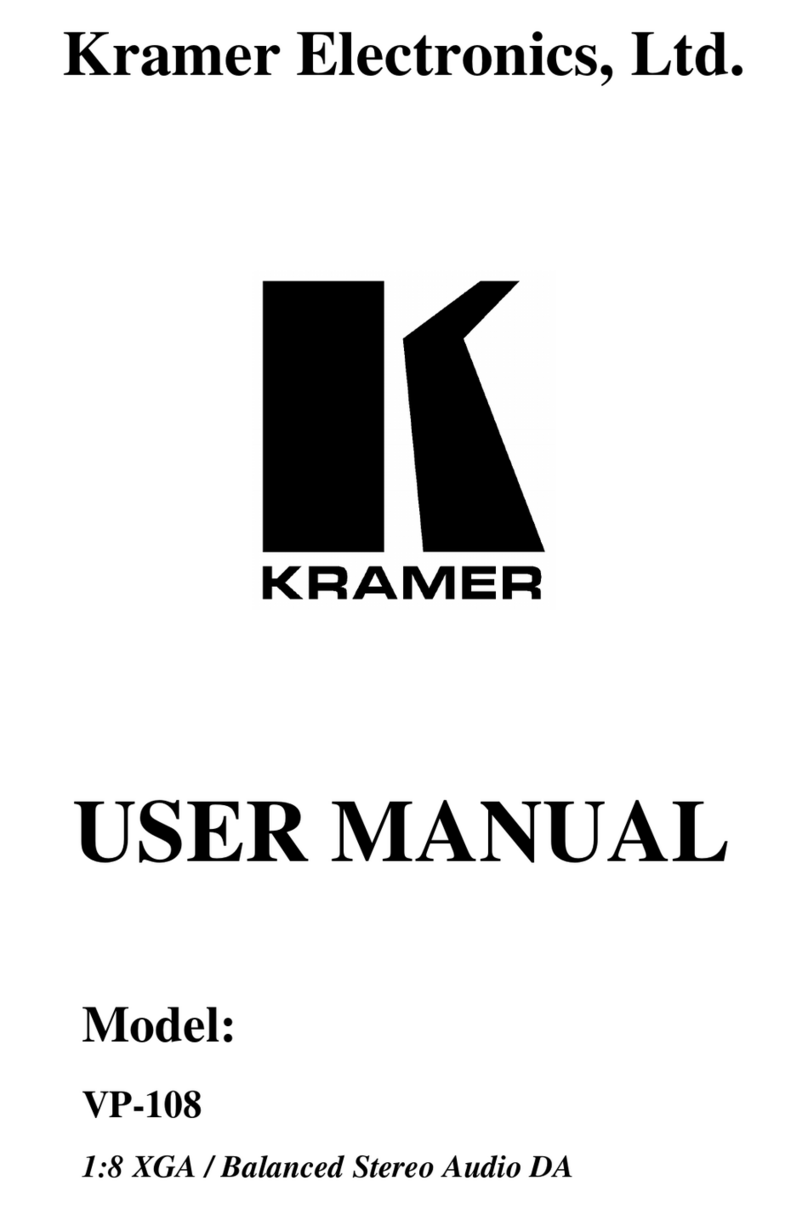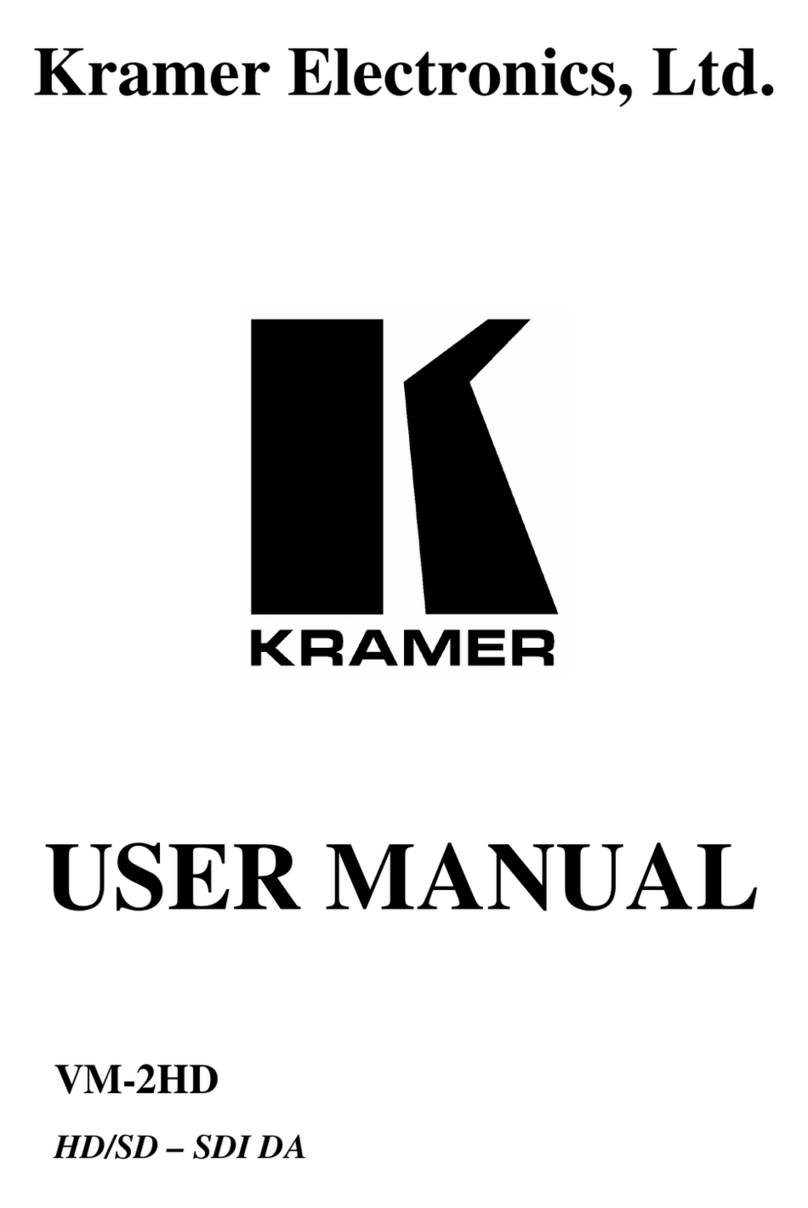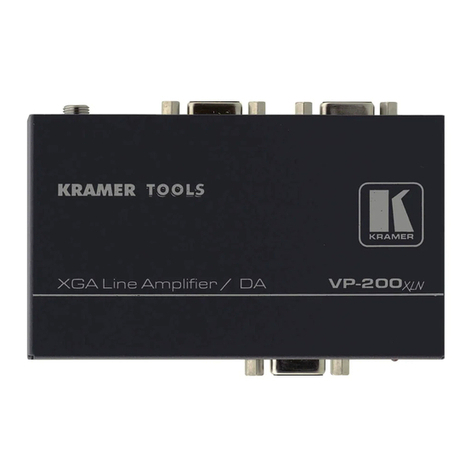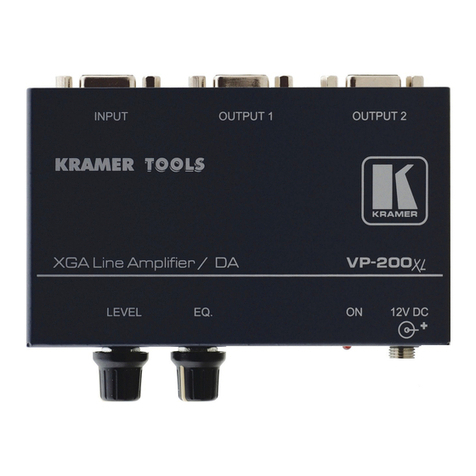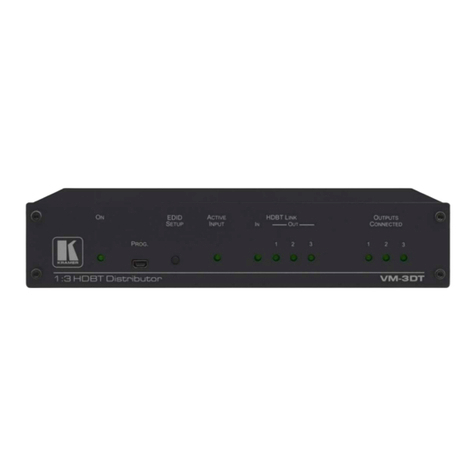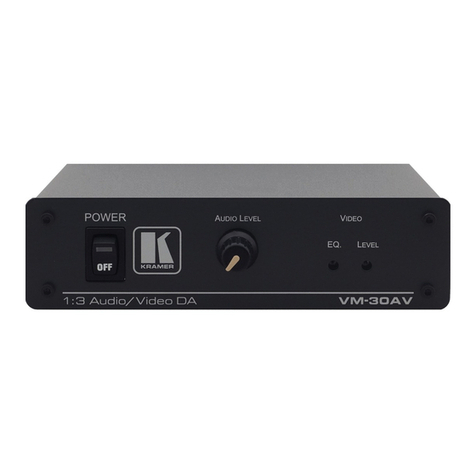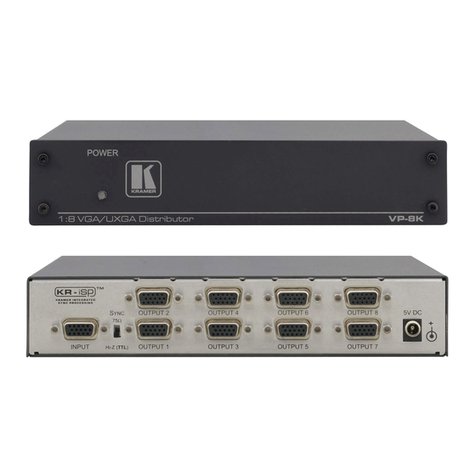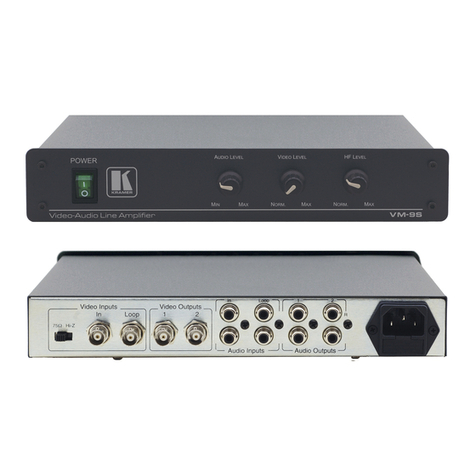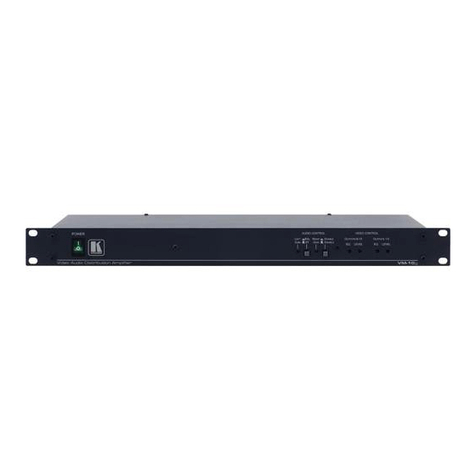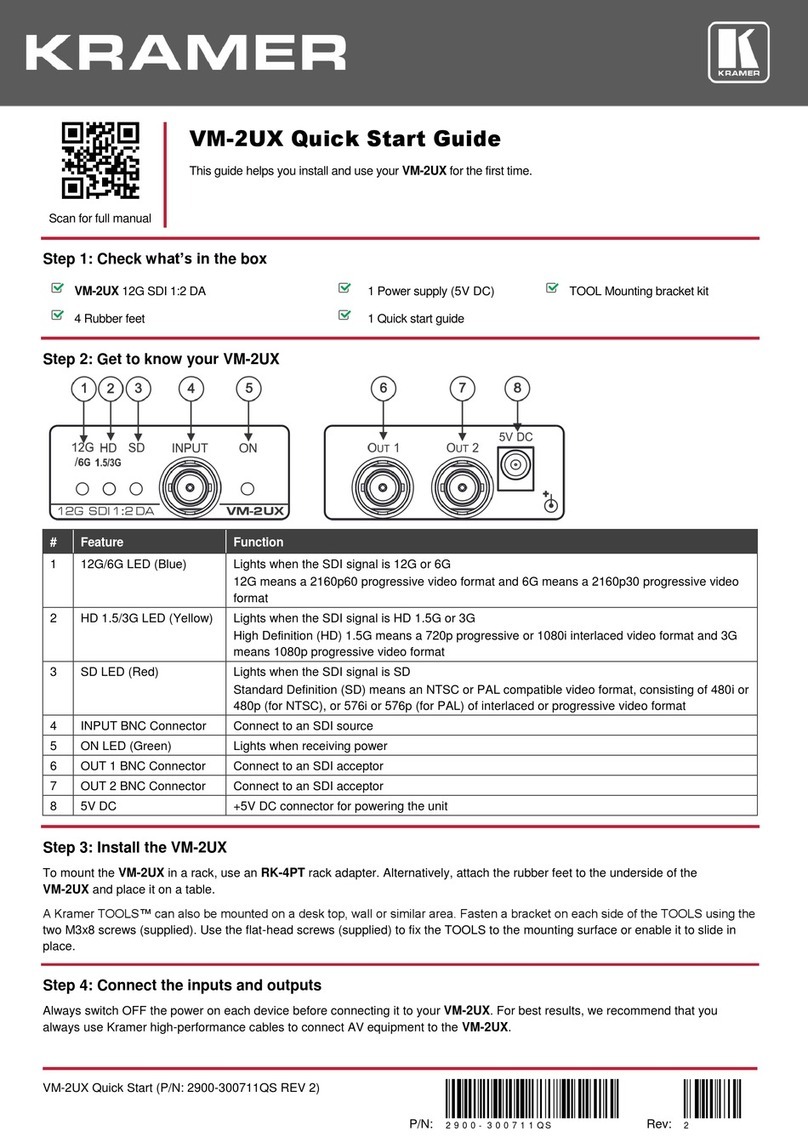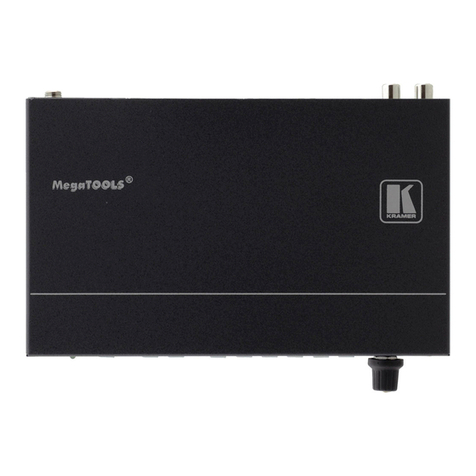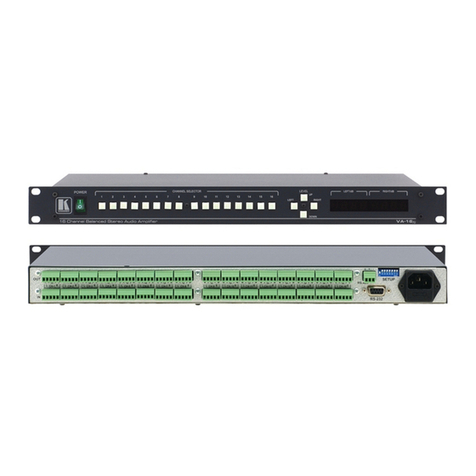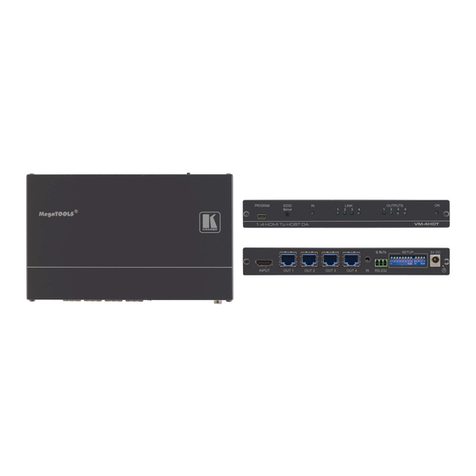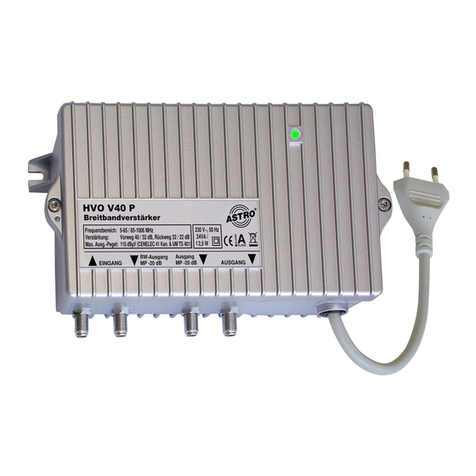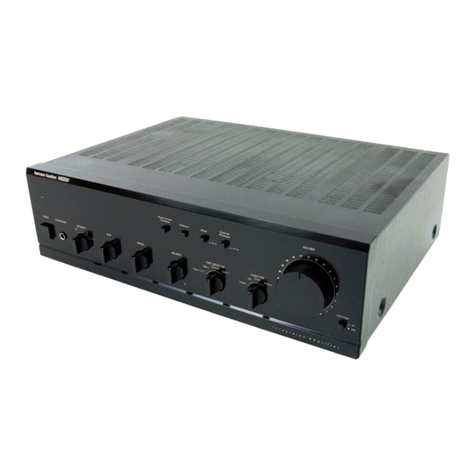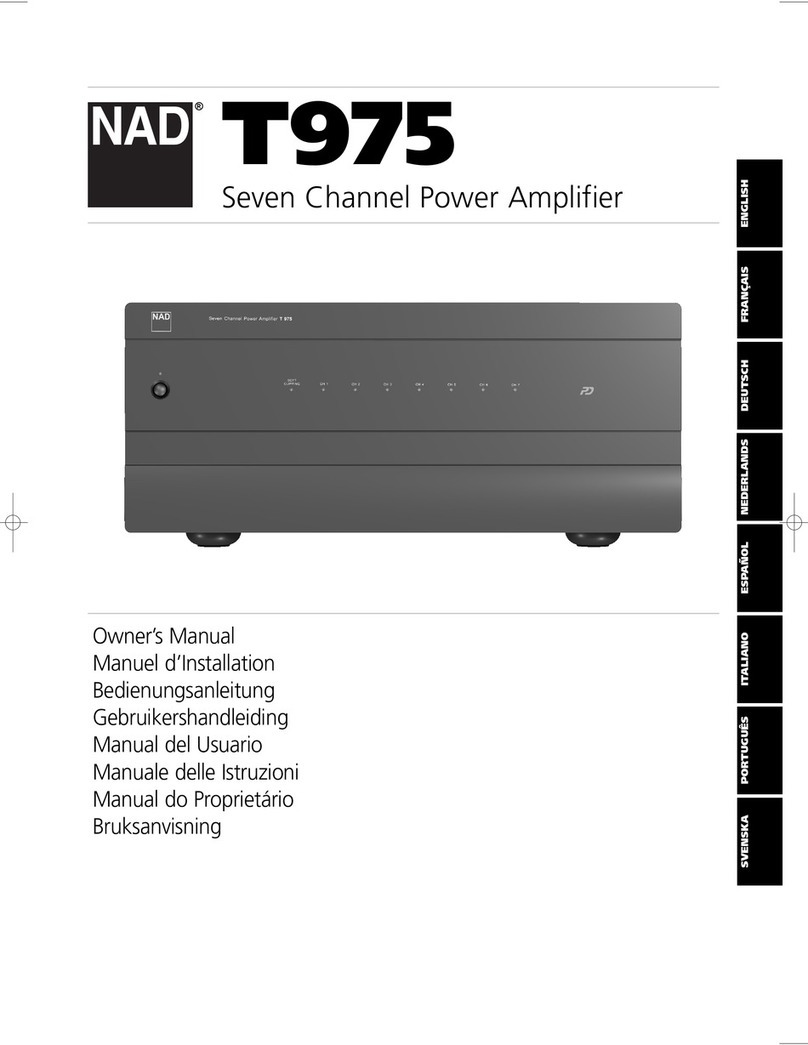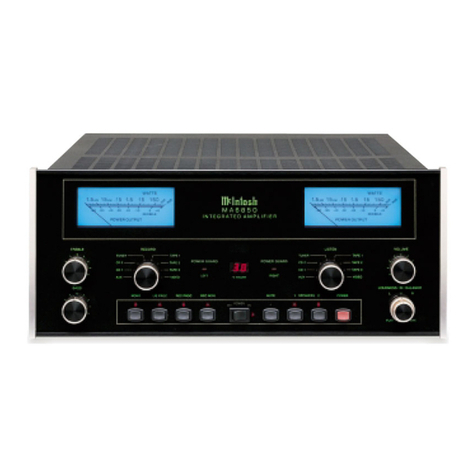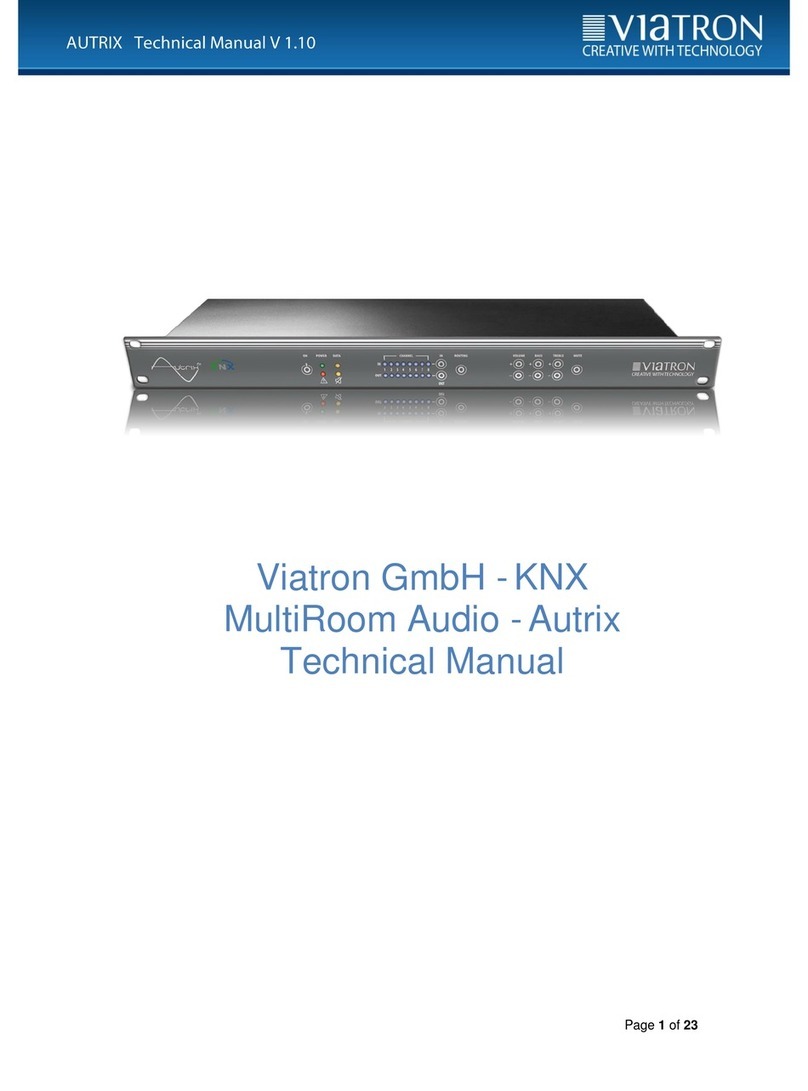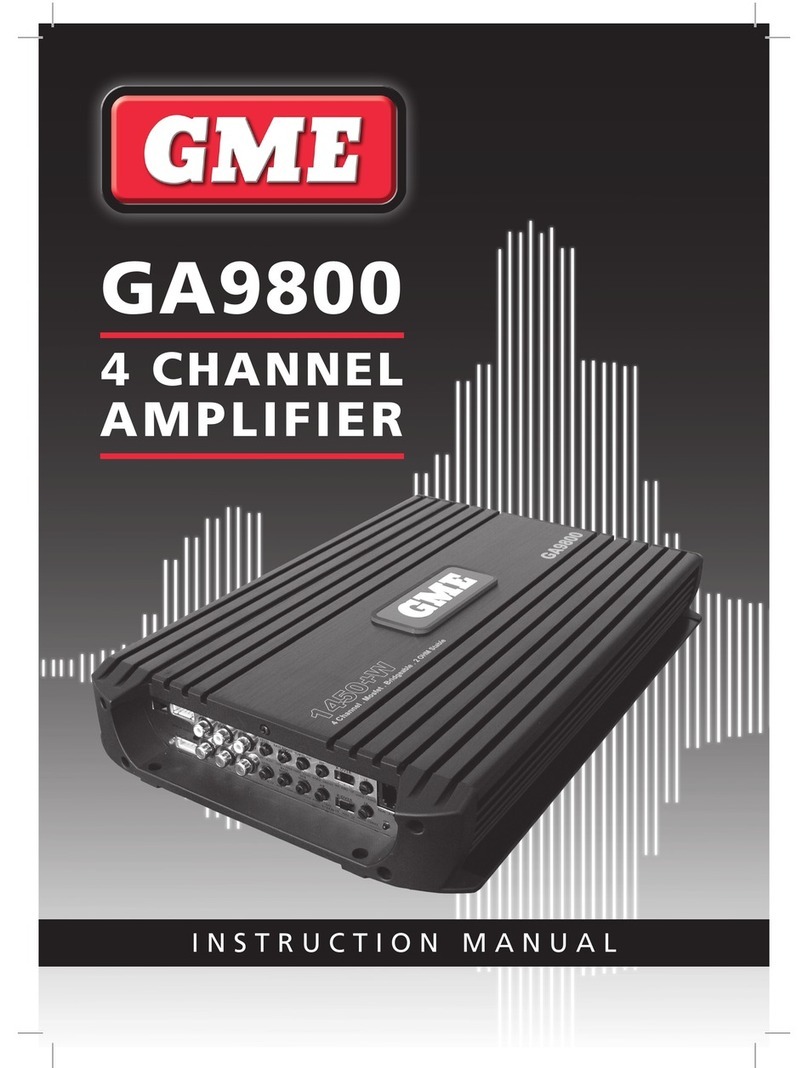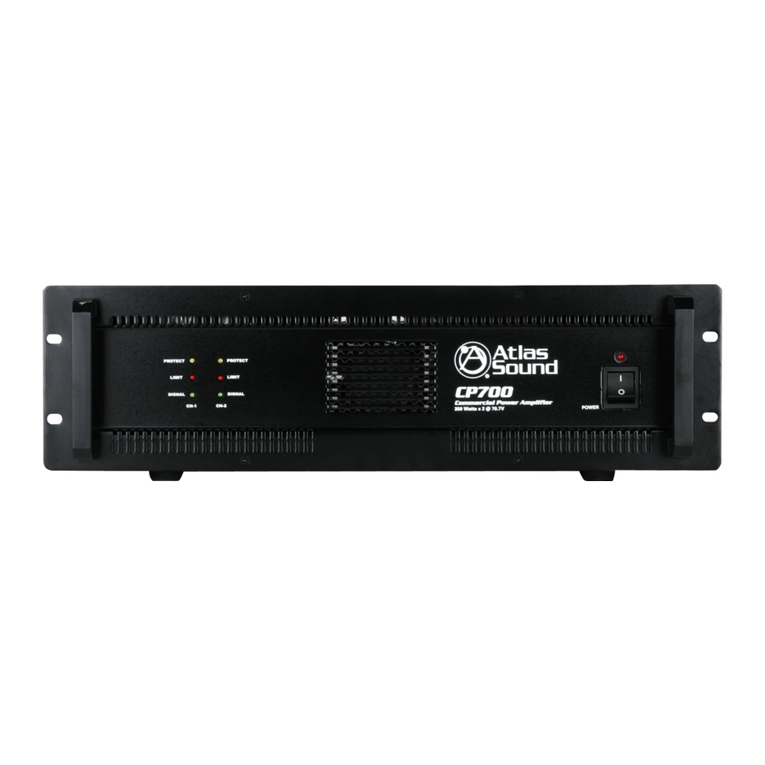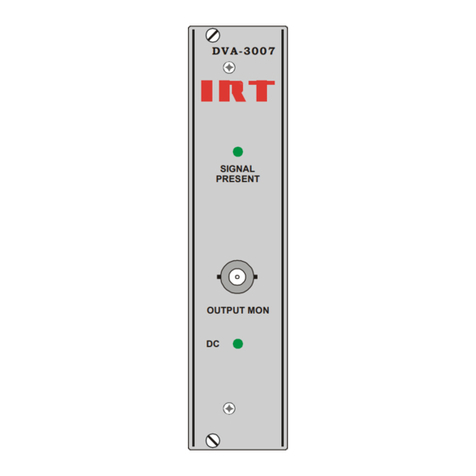
KRAMER ELECTRONICS LTD.
5
Red, Green, Blue, Horizontal/Composite sync and Vertical Sync signals available on BNC
connectors. The VP-102 allows the user to select either a Composite or Horizontal sync output and
the Green output either includes Composite sync or is blanked.
SG-11 (Sync-Green Adder/Separator) is used for adding a sync signal to the "GREEN" channel
prior to distribution. The SG-11 interfaces between the two most widely used professional
Component Video formats: RGB with Sync on Green and RGBS. The SG-11 either combines Sync
with Green or splits Green & Sync signal to separate Green and Sync on the BNC connectors.
TP-1 (Video Line Transmitter). If one of the DA outputs is sent over a long distance (100 meter or
more), it is necessary to convert the signal to twisted pair type. The TP-1 sends a color video signal
over long distances using telephone wire or any other twisted pair wire thus extending the range of
operation of a DA. The TP-1 maintains the bandwidth of an industrial color video signal up to
several hundred meters and of broadcast quality (up to 12 MHz) signals up to 100 meters. At shorter
distances, as in a studio, bandwidth of 30 MHz is easily achieved. By using the KRAMER TP-1
together with the TP-2 (Video Line Receiver) coax wiring (in a studio for example) can be
completely eliminated. The TP-1 can also be used for simplification of security and CCTV
installations, and for teleconferencing in offices and hospitals using existing intercom or telephone
wiring.
VA-11AV - (Video/Audio Combiner) Used to distribute audio/video signals. The machine can be
inserted in front of a DA, allowing the DA to distribute a video signal and two audio signals
simultaneously. It sends a color video signal and a stereo audio signal using only one standard coax
cable in real time. The machine maintains the bandwidth of an industrial color video signal and the
output signal may be viewed and recorded as a normal video signal. By using the VA-11AV together
with the VA-12AV (Video/Audio Separator) the audio stereo signal may be recovered so audio
signals may be sent in a hidden mode, to be recovered only by the VA-12AV. The VA-11AV can be
used for simplification of security and CCTV installations, using existing video coax wiring for
video and audio transmissions.
611T/611R - (611T full bandwidth Fiber Optic Transmitter and 611R matching Fiber Optic
Receiver) Part of the KRAMER TOOLS series, and designed for studio and other demanding
applications. These machines, in combination, may be used to send one of the distributed channels to
distances of 5-25Km. The 611T and 611R use state-of-the-art fiber optic circuitry and allow the user
(via rear panel trimmers) to adjust input and output video levels and high frequency peaking to
achieve best performance. Both machines, like all KRAMER TOOLS, are fed from a 12VDC source,
making them perfectly suitable for fieldwork as well.
VIDEO TESTER - A new, unique, patented, indispensable tool for the video professional, the
Video Tester is used to test a video path leading to/from an amplifier. By pressing only one touch
switch it can trace missing signals, distinguish between good and jittery (VCR sourced) signals, and
identify the presence of good signals. Whenever a video signal is missing, because of bad
connections, cable breaks or faulty sources, the Video Tester is all you need.
